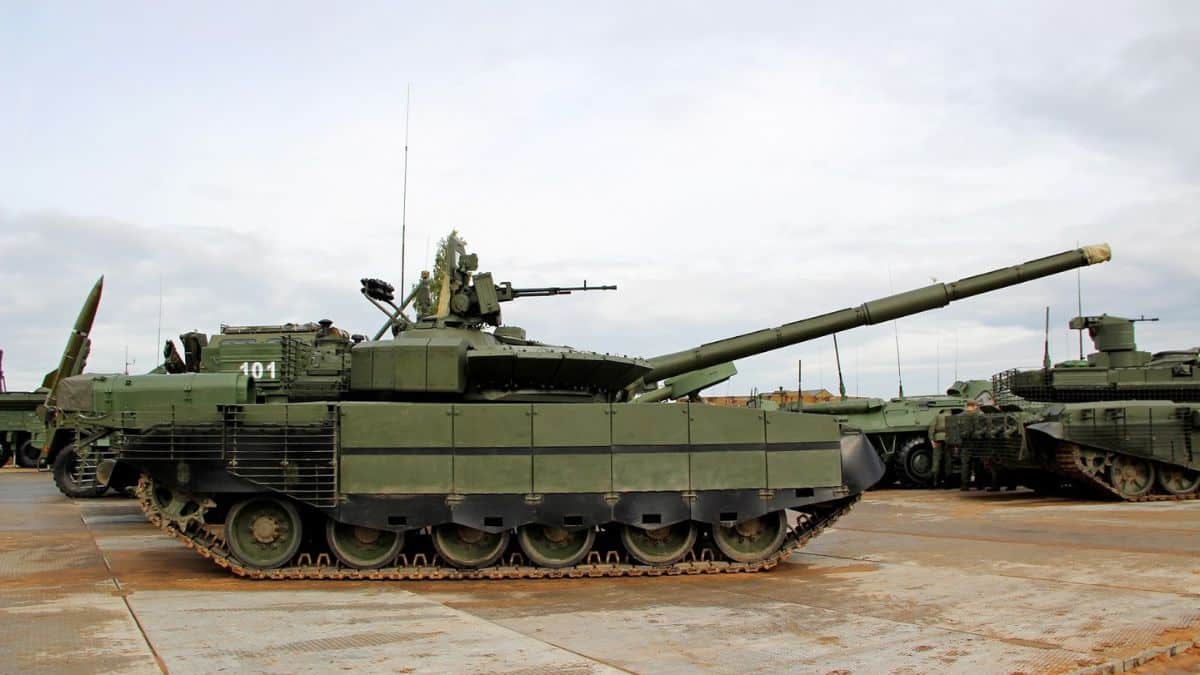 Image Credits - Blogspot
Image Credits - Blogspot
The Republic of Yemen, situated in the heart of the Arabian Peninsula, boasts a diverse collection of armoured vehicles. These mechanical behemoths have played a significant role in shaping Yemen’s history, including the Yemeni Civil War. Despite some of these tanks being considered outdated by modern standards, they remain a formidable asset in Yemen’s military arsenal, serving as a testament to their enduring relevance on the battlefield. This article takes a closer look at Yemen’s tank fleet, examining their origins, capabilities, and the pivotal roles they have played in the nation’s tumultuous past.
Yemen’s Top 5 Tanks
The T-80, a main battle tank (MBT) originally designed and manufactured in the former Soviet Union, is now being produced in Russia. It was the first tank to be powered solely by a turbine when it entered service in 1976. The T-80U, a variant of the T-80, was last manufactured in 2001 in a factory in Omsk, Russia. However, the CEO of Uralvagonzavod announced in 2023 that production would resume. Another variant, the Ukrainian T-80UD diesel engine, is still being produced in Ukraine. The T-80 is renowned for its speed, with a maximum speed of 57.3 km/h (35.6 mph), but its heavy consumption reduces the range to a mere 300 km (190 mi). The T-80 and its variants have been adopted by several countries, including Yemen, and are currently in service in Belarus, Cyprus, Egypt, Kazakhstan, Pakistan, Russia, South Korea, Ukraine, and Yemen. Please note that this information may be outdated as my knowledge is current only up to 2021. For the most accurate and up-to-date information, please refer to official military resources or experts in the field.
The T-72, a Soviet main battle tank, entered production in 1969 as an alternative to the costly and technologically immature T-64. Over the years, around 25,000 T-72 tanks have been manufactured, with many still in active service today thanks to refurbishment efforts. Notably, the T-72 holds a significant role in Yemen, where it serves as a middleman for Russian-made tanks. Yemen purchases these tanks on behalf of various African clients, including Ethiopia, Djibouti, and Sudan. While there are reports of Sanaa, Yemen’s capital, supplying 60 T-72s to Ethiopia in a $24 million deal, these reports remain unconfirmed. The T-72A, the second generation of the T-72 family, was officially adopted by the Russian army in June 1979. From the 1970s until the Soviet Union’s collapse, the T-72 stood as the most widely used tank in the Soviet Army. It was also exported to other countries within the Warsaw Pact, as well as Finland, India, Iran, Iraq, Syria, and Yugoslavia. Additionally, unauthorized copies of the T-72 were produced both with and without licenses in various locations.
The T-62, a Soviet medium tank, made its debut in 1961 as an advancement of the T-55 series. It retained many design elements from its predecessor, such as a low profile and thick turret armour. What set the T-62 apart was its smoothbore tank gun, a first in production tanks, enabling it to fire APFSDS rounds at higher velocities. In Yemen, the T-62 played a significant role in various conflict zones during the Yemeni Civil War. Even in the 1973 Yom Kippur War, the T-62 proved its mettle as Syrian and Egyptian tanks reliably penetrated Israeli Patton, Centurion, and Super Sherman tanks, despite their powerful yet slow-firing guns. The T-62 and its variants continue to serve in multiple countries, including North Yemen/South Yemen and Yemen.
The T-55, a Soviet main battle tank, was developed as a successor to the T-54B after World War II. Its primary purpose was to counter the American M60 tank and it featured a new turret design and NBC protection for the crew. With estimated production numbers ranging from 96,500 to 100,000, the T-55 series holds the record for being the most-produced tank in history. While it was eventually replaced by newer tanks in the Soviet and Russian armies, it continues to be utilized by approximately 50 other armies worldwide. The T-55 has proven its capabilities in a variety of environments, from the cold border between the USSR and China to the dense jungles of Vietnam. However, it never quite reached the quality standards of its Western counterparts. Nevertheless, its widespread use and adaptability in combat have solidified its place in military history. Even today, some countries rely on T-55 tank variants as their primary battle tanks. Over 75 years, more than 100,000 T-54/55 tanks have been in service, serving under the command of major world powers such as Russia, China, and India. This enduring legacy has cemented the T-55 as one of the most iconic military vehicles in history.
The T-54 and T-55 tanks, which were introduced after the Second World War, are a series of main battle tanks from the Soviet Union. By the end of 1945, the first T-54 prototype was completed in Nizhny Tagil. In the late 1950s, the T-54 became the primary tank for armoured units in the Soviet Army and the armies of Warsaw Pact countries, among others. Notably, the T-54 has been extensively used in Yemen. Being the most widely used tank globally, the T-54/T-55 tank series has served in over 50 countries, including Yemen, and has also been the basis for various specialized armoured vehicles. Since their introduction in the latter half of the 20th century, the T-54 and T-55 tanks have participated in numerous armed conflicts worldwide. With estimated production numbers ranging from 96,500 to 100,000, the T-54/T-55 series holds the record for being the most-produced tank in history. Although they have been replaced by newer models like the T-62, T-64, T-72, T-80, and T-90 tanks in the Soviet and Russian armies, they continue to be utilized by approximately 50 other armies globally, with some receiving advanced retrofitting. In the final four months of production, the new tanks were equipped with an L-2 “Luna” infrared searchlight, a TPN-1-22-11 IR gunner’s sight, and an OU-3 IR commander’s searchlight.
